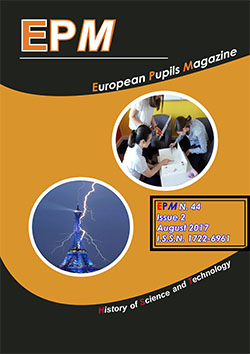Math Science Chemistry Economics Biology News Search
So, in 1830 fifty-two different elements were already known. Chemistry began to wonder what was the origin of such a big number and if it was possible to order the elements. The first who recognized a certain order (relationship) was the German chemist Dobereiner, who noticed that bromine possessed chemical properties similar to chlorine and iodine. But not only! The scientist observed that there were some groups of three elements triadi, whose properties followed a regular set: on one side there were calcium, strontiumand on the other sulphur, selenium and tellurium. But other chemists weren’t impressed by the chemical affinity and wondered if their table ordering was a waste of time.
In 1859 the spectroscope, developed by German physicists Robert Wihelm Bosen and Gustav Robert Kirchhoff, offered an important impulse to search: new elements were discovered and in 1860, during the international congress of chemistry, the Italian scientist Stanislao Cannizzaro, announced that some elements like oxygen were found in nature under the form of diatomic molecules. The spectroscopegave a great contribution in tracking different ways of analysing the possible relation between elements.
To highlight Cannizzaro’s fundamental contribution, we must open a parenthesis on his life: born in Palermo in 1826 and died in Rome in 1910, he took part in the Sicilian insurrections of 1848 but the revolt failed and he escaped to Paris. After returning to Italy in 1851, he worked as a teacher in a boarding-school of Alessandria and immediately after, at the university of Genova (1855), Pisa (1861) and Rome (1871). In Alessandria, he completed the report, that is today famous with his name, that: in the presence of concentrated alkaline hydroxides, one molecule of aldehyde changes into (is reduced into) alcohol and another one is oxidized into acid. He not only specified the difference between atomic, molecular and equivalent weight, but also contributed to the knowledge of the period; he followed a criterion (famous as Cannizzaro’s law) for defining the atomic weight of the elements starting from the molecular weight of compounds. All his work, developed on Avogadro’s law, was fundamental for the periodic classification of elements. Closing this parenthesis, in 1864 we found another event worth remembering: lithe chemist John Newlands developed a table of elements following the properties regularly detected every eight spaces. He called this repetition law of eighths. Since Newlands’ periodicity was limited to grouping a few elements, his discovery was undervalued and so it wasn’t published. Only with Mendeleev and with the German Meyer came a big success for chemistry: in 1870 a law was drawn up which definitively confirmed the properties of all five elements as periodic functions of atomic weights. In particular Meyer considered the volume taken by constant weight contained the same number of atoms of specific elements concluding that the ratio between the volumes of singular atoms of those elements. It was then possible to speak of the atomic volumes. Consequently the first term element of Meyer’s table was hydrogenthat alone made the first period. The second and third period included seven elements each respecting the law of eighths of Newlands. But his studies were underestimated because of Mendeleev’s previous publication.


